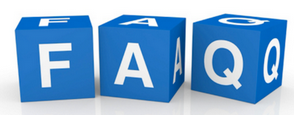FAQs
These are the most frequently asked questions on all aspects of law regulatory issues that appear when creating user documentation.
It establishes the principle of liability without fault applicable to European producers. Where a defective product* causes damage to a consumer, the producer may be liable even without negligence or fault on their part.The aim of the Directive is to facilitate the free movement of goods whilst maintaining a fair balance between the interest of consumers and producers.
Regulations
A "regulation" is a binding legislative act. It must be applied in its entirety across the EU. For example, when the EU wanted to make sure that there are common safeguards on goods imported from outside the EU, the Council adopted a regulation.
Directives
A "directive" is a legislative act that sets out a goal that all EU countries must achieve. However, it is up to the individual countries to devise their own laws on how to reach these goals. One example is the EU consumer rights directive, which strengthens rights for consumers across the EU, for example by eliminating hidden charges and costs on the internet, and extending the period under which consumers can withdraw from a sales contract.Do you always need to state the hazard, consequences and avoidance procedures even if they are obvious?
The ANSI Z535.4 standard says in Annex B:
“The word message on a hazard alerting sign typically communicates information to a viewer on the type of hazard, the consequence of not avoiding the hazard, and how to avoid the hazard. Many factors must be considered when determining whether to omit consequence, avoidance, or type of hazard information in the word message. Factors to consider include whether the message can be inferred from a symbol, other text messages, user training, or the context in which the safety sign is used.”
Steve Hall from Applied Safety and Ergonomics said on this question:
“There is no hard and fast rule, but generally you want to try to provide messages in a way that gives people a reasonable chance to read them at an appropriate time. So, for tasks that are expected to involve referring to the manual (e.g., assembly, troubleshooting, maintenance, etc.), it is generally reasonable to provide safety messages in the relevant part of the manual, and not on a label. Conversely, for scenarios where the target audience is not reasonably expected to have access to a manual, a label may be more appropriate.”
In addition, a product liability law professor said:
“Whether adequacy requires in any given case that warnings be placed directly on the product involves a balance of the significance of the hazard, the user’s need for the information, the availability of a feasible means to place the warnings on the product, and other factors in the calculus of risk. If feasible, reason normally suggests that important warnings be placed on the product itself rather than in a pamphlet, booklet, or information sheet that can be damaged, lost, destroyed or stuffed in an office drawer… Depending on the circumstances, however, a warning may still be adequate even if it is provided off the product in a manual or other writing.”1
In principle, electronic records is no different than paper records except their media for creation, storage, maintenance, management, disposal, or preservation. The reason is probably that most manufacturers provide their instructions in a hard copy. According to ISO 9001 documented information should be readily available at the point of use and accessible as hard copy or electronic media.2
No. For example, a teddy bear does not need a manual. Although a teddy bear does not need a user manual, the manufacturers have to keep a technical file in which they state that the product is safe to use, including the reasons why.
One of the requirements in any EU Directive is that a user should clearly understand how to use a product and, as a consequence, use it safely.
If it is not immediately obvious how to use the product, a user manual is required.
If you would like to have an indication which products probably need a user manual, you can find the relevant product categories on a specific EU Product Categorisation System website: .
Here, you’ll find all the information on all 25 product categories that the EU distinguishes – among them boilers, lifts, machinery, medical devices and toys.
The ISO 9001 standard is a document that describes all of the requirements needed in order to create and maintain a quality management system as described in ISO 9000. This is a subtle difference between ISO 9000 and ISO 9001 that some fail to recognize. So, to explicitly point it out, the difference between the two (ISO 9000 vs 9001) is summarized as the definition of quality management system (ISO 9000) and requirements needed to meet that definition (ISO 9001).
For more details, see:
https://linfordco.com/blog/what-is-iso-9000/ ; https://www.process.st/iso-9000/

"ISO 9001:2015 defines documented information as meaningful data that is required to be controlled and maintained by the organization and the medium on which it is contained. Notes to this definition indicate that documented information can refer to the Quality Management System (QMS) and its processes, documentation, and records"
For more details, see:
Procedure Documents No Longer Required by ISO 9001:2015 ;
ISO 9001:2015 Clause 7.5 Documented Information;
Documented Information in ISO 9001 with Procedure
.
User documentation is the content you provide end users to help them be more successful with your product or service.
“ Copyright ” refers to all the rights authors own in their literary and artistic works. It’s what allows owners to carefully control how their work is used, distributed ,reproduced, translated and more
Endnotes
1 source: Product Liability Law, 2d Edition, page 601 (Thomson West 2008).
2 source: https://incompliancemag.com/article/product-safety-instructions-and-warnings/
